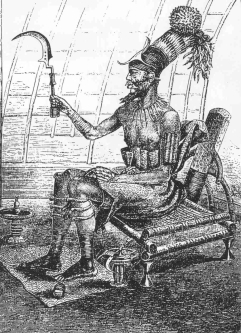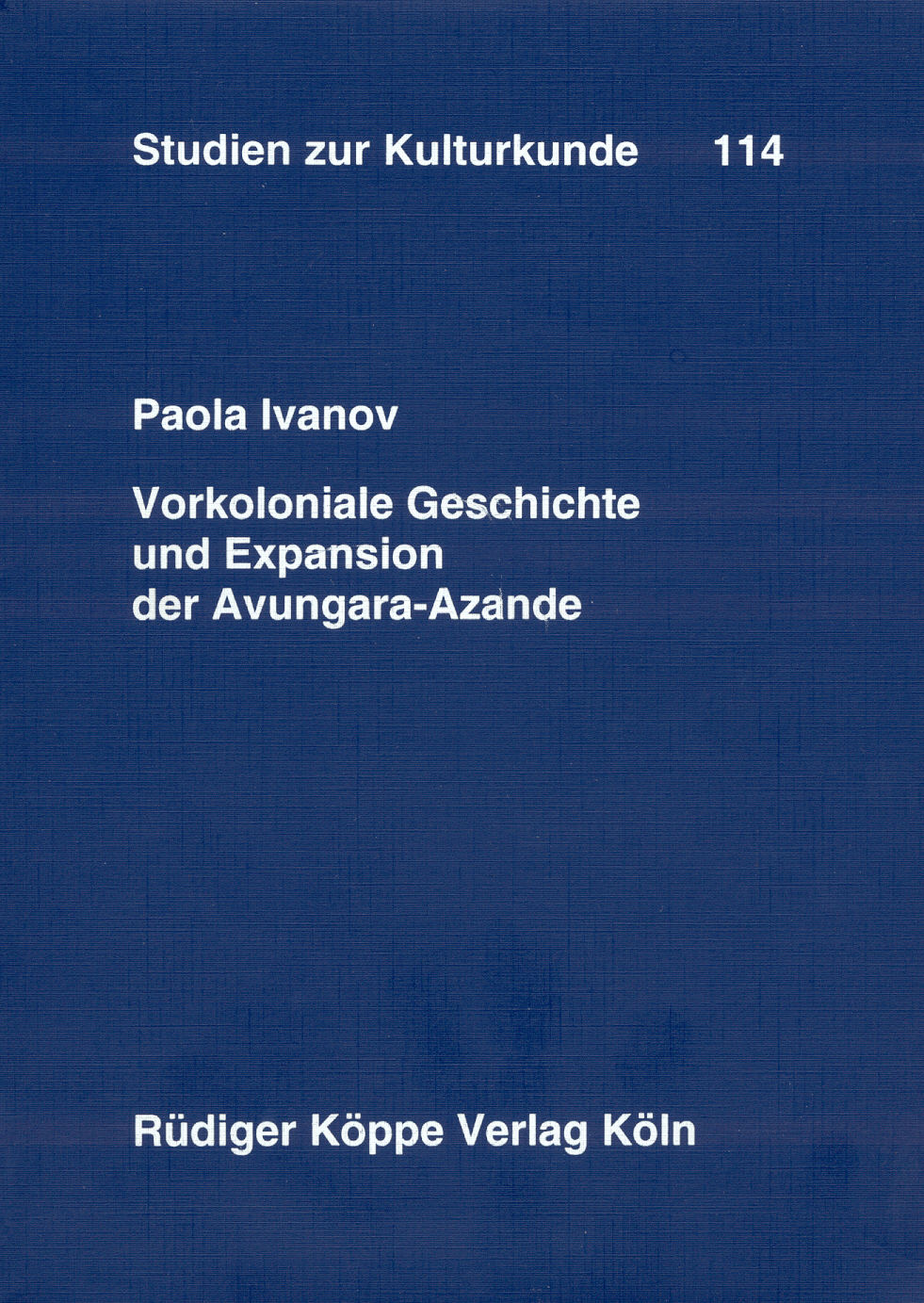

Vorkoloniale Geschichte und Expansion der Avungara-Azande
Eine quellenkritische Untersuchung
Author: Paola Ivanov. Series edited by: Beatrix Heintze, Karl-Heinz Kohl.
Series: SzK Studien zur Kulturkunde Volume 114
2000784 pp.
16 maps, 14 genealogies, 4 illustrations, 51 tables
Text language(s): German
Format: 170 x 240 mm
1440 g
Paperback
€ 69.80
Buy 'Vorkoloniale Geschichte und Expansion der Avungara-Azande' as a downloadable PDF document directly from our online shop »
Order 'Vorkoloniale Geschichte und Expansion der Avungara-Azande' as print edition »
The present study is concerned with the history and political organisation of the Azande, which have become famous by the studies of E.E. Evans-Pritchard. The book reconstructs the rapid and vast expansion of the Azande under the leadership of the Avungara ruling clan and analyzes the underlying structure of power. In the second half of the 18th century the Avungara started to expand their power over a substantial area situated at the Nile/Congo watershed – an area which is nowadays divided between the Central African Republic, the Sudan, and the Democratic Republic of the Congo.
Characteristic for the rule of the Avungara was that it did not lead to geographically and historically stable political entities. Instead, there existed a varying number of steadily expanding principalities, whose continuity entirely focused on the respective ruler. The absorption of numerous groups of diverse linguistic and ethnic backgrounds resulted in the complex of people commonly known as Azande. The common interpretation of the Avungara-Azande’s expansion, reducing it to an exclusively military endeavour, is insufficient for grasping the dynamism of their political system.
As the study shows, it rather reproduces the stereotype of the Azande as fearsome warriors and cannibals (Niam-Niam), an image which was created by northern Sudanese traders and European travellers in the 19th century. In contrast, the detailed analysis of the stages of expansion and the resulting processes of integrating successive groups of people into the system of Avungara-Azande rule reveals a more realistic picture of the Avungara: Their success was founded on a flexible system guided by political power strategies, which in turn were based on individual power as well as in the building of intricate alliances and extensive client networks.
Special attention is given to the reaction of this system to the impact of first the northern Sudanese traders and later the European colonizers, who in the last decades of the 19th century have substantially influenced the history of the region. This approach leads to an evaluation of the European discourse about the Azande and their neighbours, which was shaped by this colonialistic experience.
Following these links you will find further analyses of the Central African history, on Adamawa languages like Zande and contributions to paper collections:
Cross-reference:
- A Grammar of Mambay
(ISBN 978-3-89645-425-6 ) - A Study of Mambila – Emmi Meyer’s Mambila-Studie
(ISBN 978-3-89645-234-4 ) - Afrikanische Sprachen im Fokus
(ISBN 978-3-89645-196-5 ) - Contes des Bakas (Sud-Est Cameroun)
(ISBN 978-3-89645-272-6 ) - Dictionnaire mambay-français. Index français-mambay
(ISBN 978-3-89645-430-0 ) - Die Sprache der Fali in Nordkamerun
(ISBN 978-3-89645-561-1 ) - Historical Perspectives on Chamba Daka
(ISBN 978-3-927620-47-6 ) - Linguistische Beschreibung des Kolbila
(ISBN 978-3-89645-569-7 ) - Max Buchners Reise nach Zentralafrika 1878–1882
(ISBN 978-3-89645-160-6 )
Reviews
Die Leistung der Autorin besteht in der bewundernswerten Fleißarbeit, die Puzzlestücke zur Geschichte der Azande und ihrer Quellen sortiert und strukturiert zu haben. Sie hat enorm viel Informationen zusammengetragen und versucht, aus vielen Fakten und Daten ein Gesamtbild der Azande-Geschichte zusammenzustellen. Bisher gab es nur Ansätze einer Geschichtsschreibung von einzelnen Fürstentümern. [...]
Man hat jetzt ein für die Azande-Forschung grundlegendes Buch, das eine sehr große Materialsammlung enthält, die auch benachbarte Gruppen umfasst.
Doris Herdin in Tribus, 52/2003, 265-266
| « back | Print version | [top] |
 Books
Books Audio
Audio Biographies
Biographies Series
Series Festschrifts
Festschrifts Journals
Journals